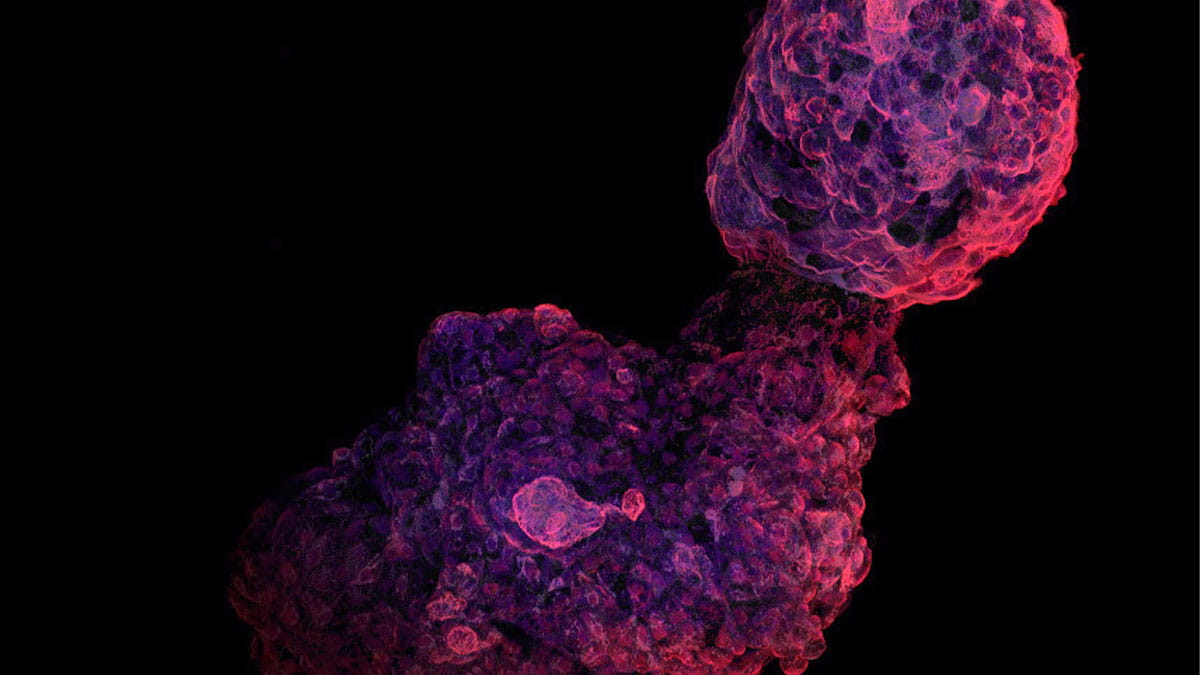Unraveling motor neuron loss and regeneration in spinal muscular atrophy

In his laboratory, Arthur Burghes, PhD, professor in the Department of Biological Chemistry and Pharmacology at The Ohio State University College of Medicine, focuses on developing a deeper understanding of genetic neuromuscular disorders on a molecular level. In particular, he works to further the journey he began in the 1990s – unraveling the molecular biology of spinal muscular atrophy (SMA), an autosomal recessive disorder characterized by the destruction of motor neurons in the spinal cord, leading to muscle weakness and atrophy.
SMA is a genetic condition caused by loss or mutation of the survival motor neuron 1 (SMN1) gene. It is classified as four types, based on clinical severity and when symptoms begin. The most prevalent is type 1, which typically presents within the first six months of life, whereas type 2 appears between six and 18 months of life. Symptoms of type 3 can begin as early as 18 months old or as late as adulthood. Types 2 and 3 account for 40% of people with SMA.
In type 4, symptoms generally appear in patients who are older than 30. Newborn screening is in place in the United States, as is gene and drug therapy, which Dr. Burghes and his team participated in developing.
“Drugs that increase sensory motor neurons from survival motor neuron 2 (SMN2) and antisense oligonucleotides (ASOs) are all FDA-approved,” Dr. Burghes says. “When giving early, when patients are presymptomatic or in utero, they are quite effective.”
Studies have shown that ASOs can prevent damage to motor neurons in the spinal cord as they lead to the production of more functional sensory motor neuron protein, which is essential for maintaining motor neuron health. Type 1 adult patients who have had SMA for a period of time can also benefit from stimulation of sensory neurons. Dr. Burghes says this is not the case for patients with type 3.
“The issue with the stimulation of sensory neurons in type 3 adults is that it is fairly difficult to do over a wide range of neurons up and down the spinal cord,” Dr. Burghes says. “There is still a lot of motor neuron loss, and we need to develop effective treatments to slow the disease progression.”
Bakri Elsheikh, MBBS, professor of Clinical Neurology at the Ohio State College of Medicine, oversees the clinical care of adult SMA patients in the organization’s multidisciplinary clinic, which is one of the leading centers in the country. He also treats a large number of type 2 and 3 patients. Recent research has helped his team understand the effect of survival motor neuron (SMN) protein restoration on motor unit function. It also established the basis for rational additive synergistic therapies to address aspects of motor unit function that are not adequately restored with late SMN restoration via existing drugs, like nusinersen, used to treat SMA.
“Our group, among others, has shown that even in adult patients with advanced stages of the disease, current therapies can help stabilize or slow disease progression,” Dr. Elsheikh says. “We are encouraged by the continued advancements in the field, both in enhancing existing treatments and in the development of new therapies currently in the pipeline.”
The team has also identified persistent neuromuscular junction (NMJ) dysfunction as a common feature in adults with SMA types 2 and 3. He adds that so far, treatment with nusinersen has not fully corrected this abnormality. A study using risdiplam, an oral therapy with systemic bioavailability, is underway to determine whether it can improve NMJ transmission.
Additionally, recent data on higher dose nusinersen suggest potential additive benefits. There are also studies exploring compounds such as chloride channel inhibitors. His team is actively participating in these efforts, which aim to evaluate the role of combination therapies in enhancing neuromuscular transmission and optimizing patient outcomes. Other investigational approaches, such as new generation myostatin inhibitors, have shown promising results in young adults.
“Together, these efforts represent a growing era of targeted, mechanism-based treatment strategies aimed not only at halting disease progression but also at improving strength and function for individuals living with SMA, including adults,” he says.



